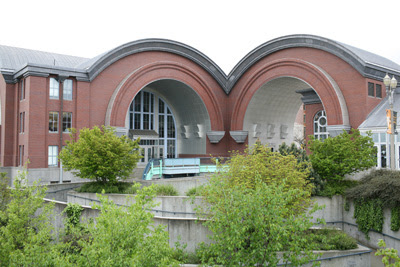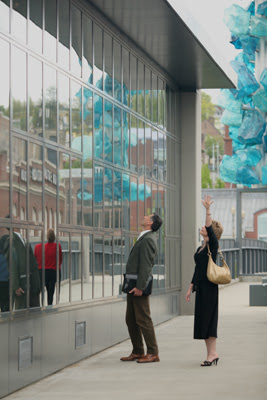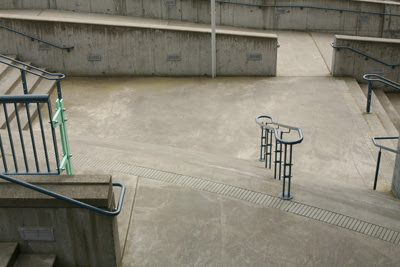
Well, this week I had some days free, and decided to pack the camera systems, the digital and large format ones, into the van and wander around downtown Tacoma. This was after finalizing the essay on go, look, and see to be a photographer. While the days were interesting carrying two camera bags around for a few hours, I did manage to take some photos with the 4x5 camera and lots of digital images. I did learn a few lessons too.
You have to keep your brain plugged in while photographing, at least enough so that you get either the images you want in a few or enough to overcome all the stupid and dumb things you did. One of my goals is to learn large format photography. I've learned the mechanics of the work is straight-forward and fairly easy to follow, the difficult ones take time and experience. As I read, nothing replaces experience and simply put, they wrote, don't worry about your first sheet of image. It's the learning curve.
I won't know for another week or so when drop the sheets by the lab. I've been using Kodak T-max 100 and Fuji Provia F 100. And as much as you think you know what to do, it's doesn't really happen. You see you have to determine the exposure and set the camera aperture and shutter speed, and then load and expose the sheet. At $4-5 per sheet for film and processing, you have to really think about the exposure. Mistakes aren't cheap.
And while you think it should be easy, it's not until you've done it many times to be comfortable and trust your judgement. And if you're think, "Yeah, right. I just trust the camera." Well, you can't. It has no light meter. You have to bring one or use another camera, and you have to judge between the incidental and reflective light, and where to put zone V with black and white film or where to put the optimum exposure with color film.
You see there is a moment you have to push the shutter release. And did I say carry a notebook and write all sorts of notes so you can read them when viewing the results? Yup, lots O' notes, like the different light readings, the range from the darkest to the brightest, and the final settings for the exposures. And don't forget the obvious, like the lens along with the really obvious but easily overlooked, like when, where, weather, sky conditions, film, etc.
Anyway, I'll see when the film comes back. The key is don't expect anything and you'll be surprised if it works. Well, that was the large format work exposing 8 sheets of film. The second half of the work was to carry the digital camera around just photographing what I see. And I learned a few more lessons about keeping your brain plugged in.

I decided to photograph the outdoor glass exhibit with the Glass Museum on the walkway from Pacific Avenue to Dock Street. It's a cool exhibit but reviewing the slides I had a hard time keeping vertical straight. Most of the images have a slight tilt, which was a surprise, but something to remember next time, along with photographing with different light.
And this lead to the second lesson. While on the overlook about the entrance to the Museum (part build under a plaza) I watched a professional doing a photo shoot for some advertisement. They used light reflector screens to balance the light. It was interesting to watch their work process, and they were kind enough to let me photograph them working. And the lesson?
Well, I learned I really have to watch the autofocus, it's easy to get wrong if you move the camera out of the autofocus points, a number were out of focus moving to the distant background instead of moving people. In short, get out the manual and read some more. I also learned I have to rest my eyes more during these walking photo trips. I generally use manual focus and use the sharp focus screen with my 5D, which is great when it works, but easy if your eye is tired.

Anyway, that's the two day adventure, and I'll leave you with an image I really like, but many might say, "Huh?". That's the beauty of photography, it's all personal, your vision, heart and soul. Ok, emotional, but I like to see and take full size images, meaning I rarely crop my photos. I use fixed focal length lenses and move where the whole image in the viewfinder is what I want. Anyway, I saw this and liked it.

No comments:
Post a Comment